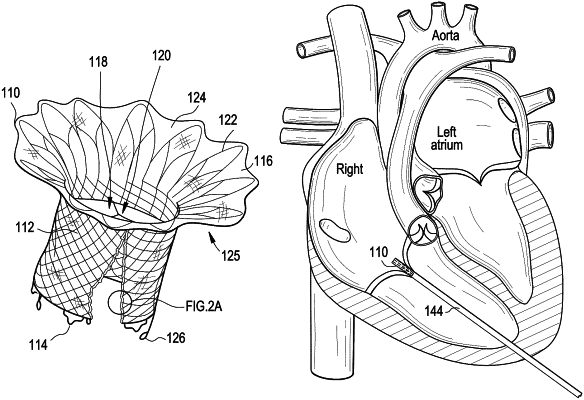| CPC A61F 2/2412 (2013.01) [A61F 2/2409 (2013.01); A61F 2/2418 (2013.01); A61F 2/2427 (2013.01); A61L 27/34 (2013.01); A61L 27/3625 (2013.01); A61L 27/3629 (2013.01); A61L 33/0011 (2013.01); C08L 67/04 (2013.01); A61B 17/0401 (2013.01); A61B 2017/0404 (2013.01); A61B 17/064 (2013.01); A61B 17/0644 (2013.01); A61F 2/2436 (2013.01); A61F 2/2457 (2013.01); A61F 2210/0004 (2013.01); A61F 2210/0014 (2013.01); A61F 2220/0008 (2013.01); A61F 2220/005 (2013.01); A61F 2220/0058 (2013.01); A61F 2220/0091 (2013.01); A61F 2230/0013 (2013.01); A61F 2230/0034 (2013.01); A61F 2230/005 (2013.01); A61F 2230/0054 (2013.01); A61F 2230/0067 (2013.01); A61F 2230/0091 (2013.01); A61F 2310/00023 (2013.01); A61F 2310/00077 (2013.01); A61L 2400/16 (2013.01); A61L 2430/20 (2013.01)] | 17 Claims |

|
1. A method of treating tricuspid valve regurgitation in a patient, the method comprising:
advancing a delivery catheter into or adjacent to a native tricuspid valve of the patient, the native tricuspid valve separating a right atrium from a right ventricle of the patient, the delivery catheter containing a prosthetic heart valve in a collapsed condition during the advancing, the prosthetic heart valve including a stent, a leaflet assembly supported by the stent, and a flexible gasket coupled to a ventricular end of the stent and positioned around an exterior of the stent;
while the delivery catheter is in or adjacent to the native tricuspid valve of the patient, beginning to deploy the gasket from the delivery catheter; and
after beginning to deploy the gasket from the delivery catheter, advancing the prosthetic heart valve through the native tricuspid valve until the gasket contacts an annulus of the native tricuspid valve to stop the prosthetic heart valve from traveling further through the native tricuspid valve,
wherein the gasket is coupled to the stent at a joint at or near the ventricular end of the stent.
|